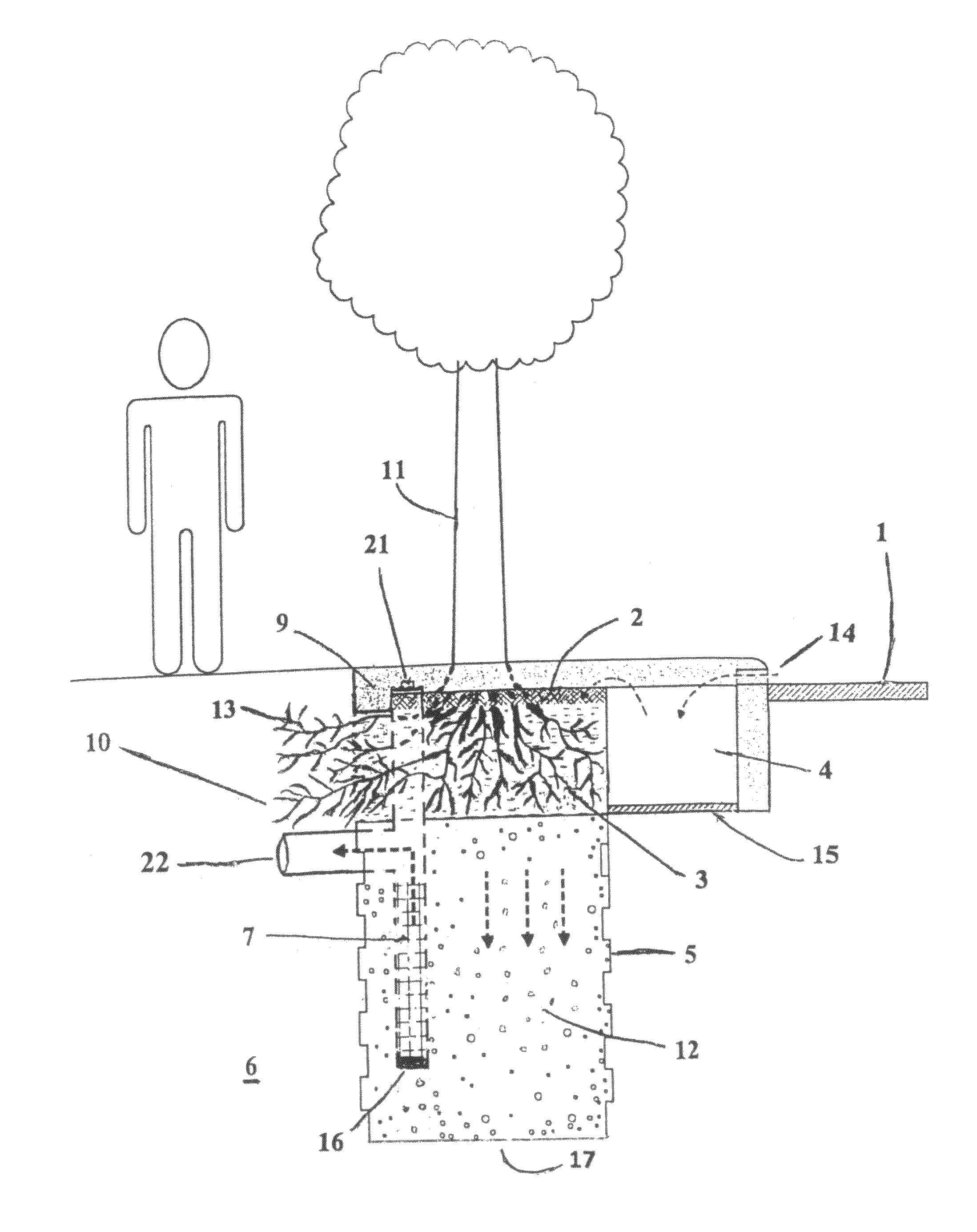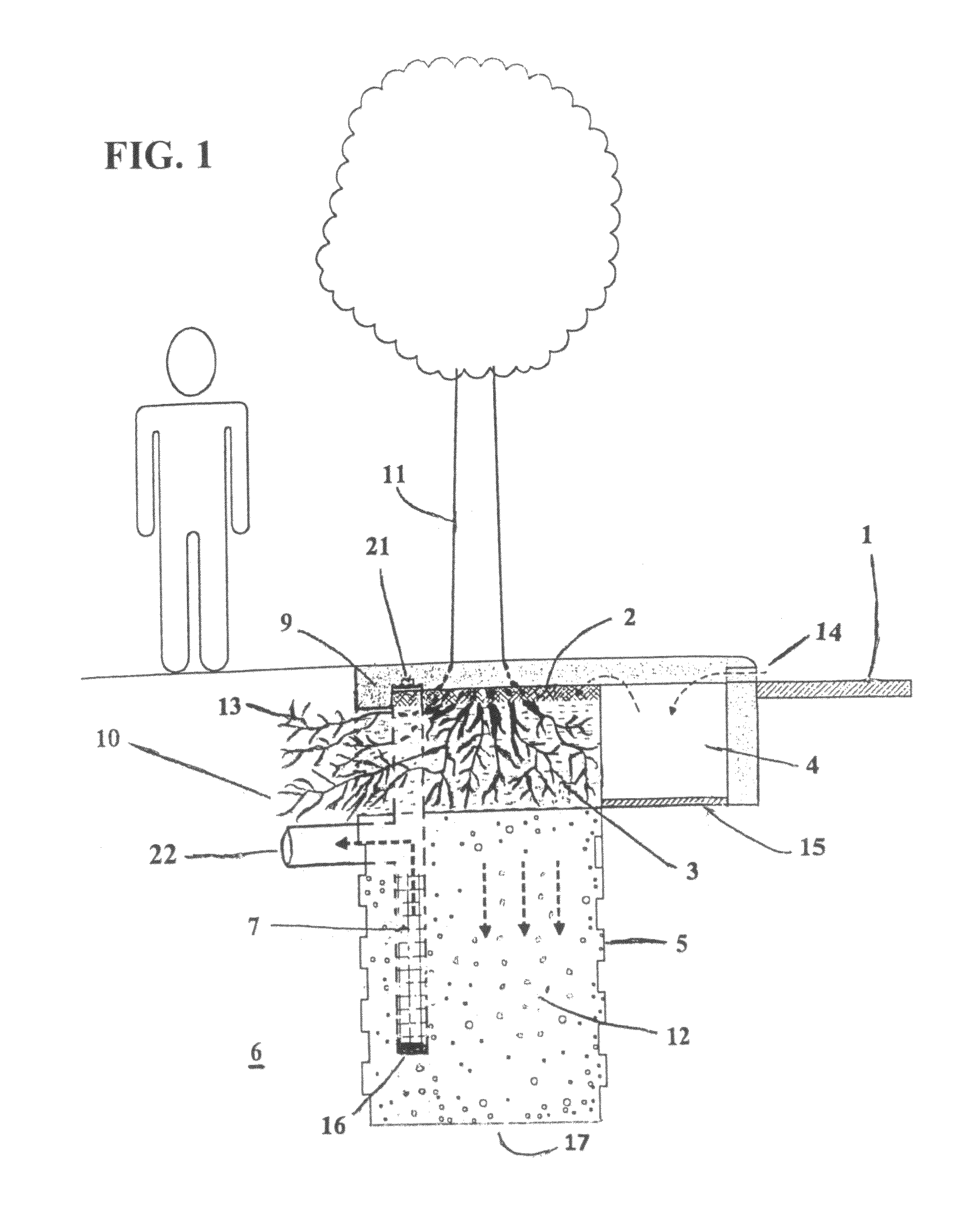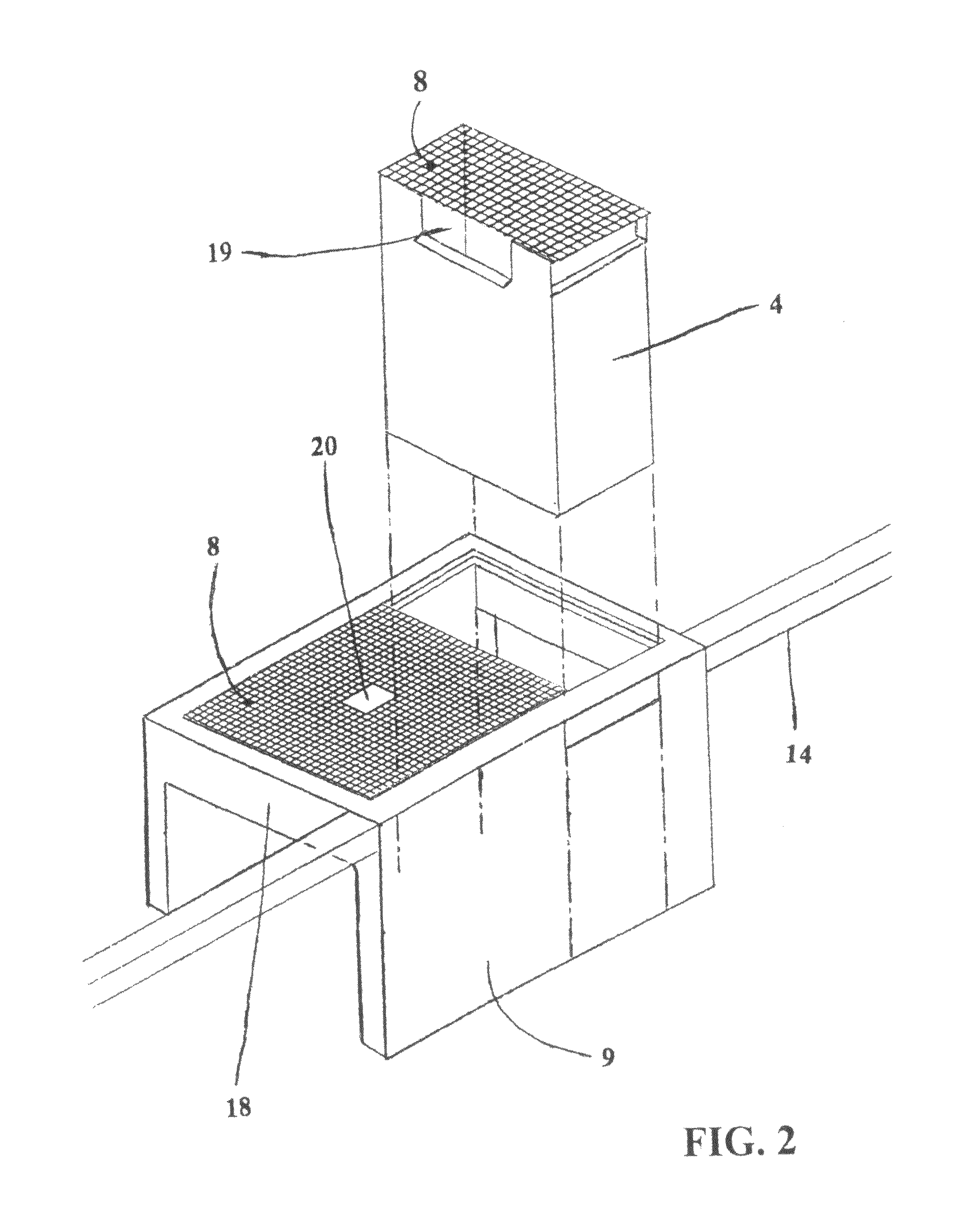Stormwater filtration system and method with pretreatment capability
a filtration system and pretreatment technology, applied in water cleaning, separation processes, sewage draining, etc., can solve the problems of affecting aquifer systems, infiltrating groundwater, and affecting surficial water bodies, and reducing sunlight penetration within water bodies. , the effect of reducing the penetration of sunligh
- Summary
- Abstract
- Description
- Claims
- Application Information
AI Technical Summary
Benefits of technology
Problems solved by technology
Method used
Image
Examples
Embodiment Construction
[0036]The present invention is designed to be a stormwater runoff treatment system whereby mixed debris, sands, sediment, entrained and dissolved chemical and biological pollutants are separated, treated and / or remediated via physical, chemical, and biological processes prior to being directly infiltrated to the subsurface environment, and / or discharged to a separate drainage system. Referring now to FIG. 1, the stormwater runoff treatment system consists of three perceived stages of remedial operation: 1) The first stage consists of a pretreatment collection chamber 4; 2) The second stage consists of a substantially water impermeable container 9, containing a mulch layer 2, and an underlying filter media layer 3, which maintains a vegetative plant(s) 11 whose roots 13 are resident in the filter media layer, and are able to horizontally communicate unrestricted with the surrounding existing (native) soils 10; 3) the third stage consists of an open bottomed collection compartment or ...
PUM
| Property | Measurement | Unit |
|---|---|---|
| Flow rate | aaaaa | aaaaa |
| Area | aaaaa | aaaaa |
| Subsurface | aaaaa | aaaaa |
Abstract
Description
Claims
Application Information
 Login to View More
Login to View More - R&D
- Intellectual Property
- Life Sciences
- Materials
- Tech Scout
- Unparalleled Data Quality
- Higher Quality Content
- 60% Fewer Hallucinations
Browse by: Latest US Patents, China's latest patents, Technical Efficacy Thesaurus, Application Domain, Technology Topic, Popular Technical Reports.
© 2025 PatSnap. All rights reserved.Legal|Privacy policy|Modern Slavery Act Transparency Statement|Sitemap|About US| Contact US: help@patsnap.com



